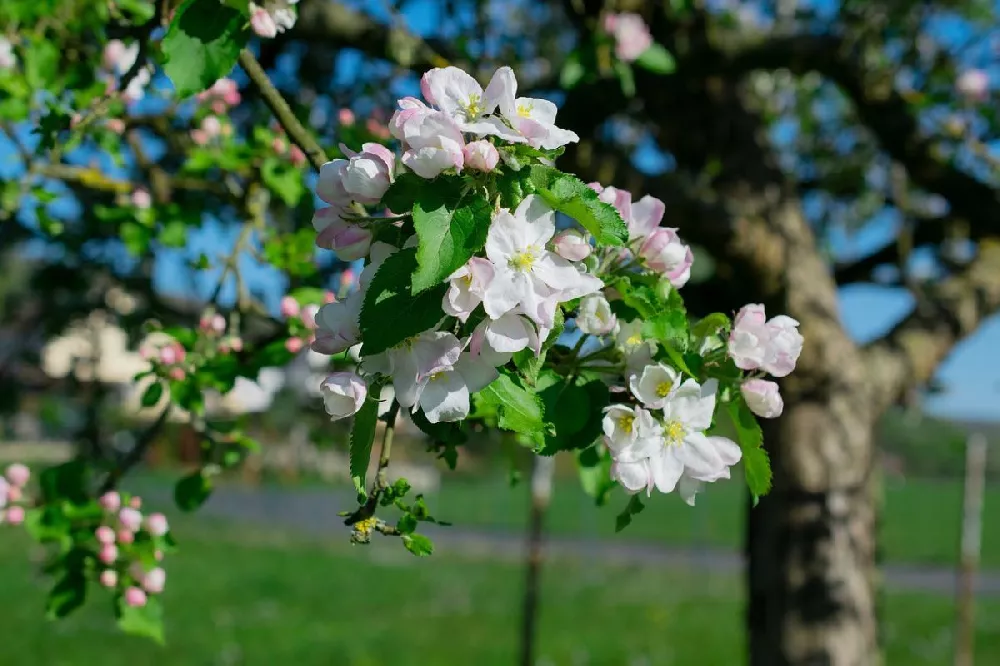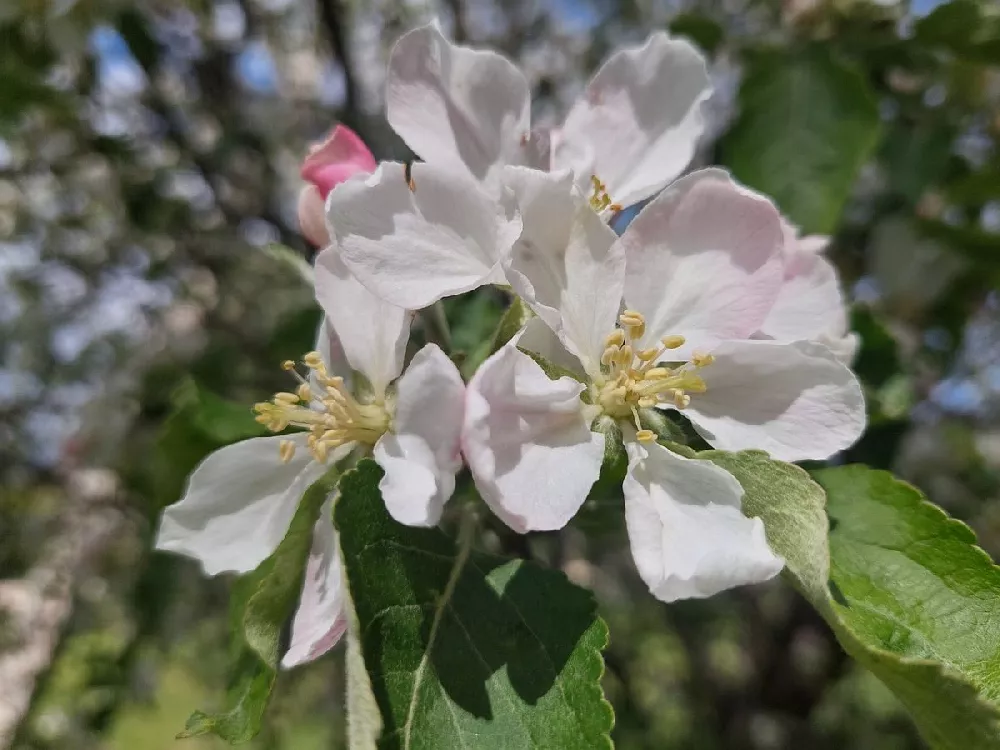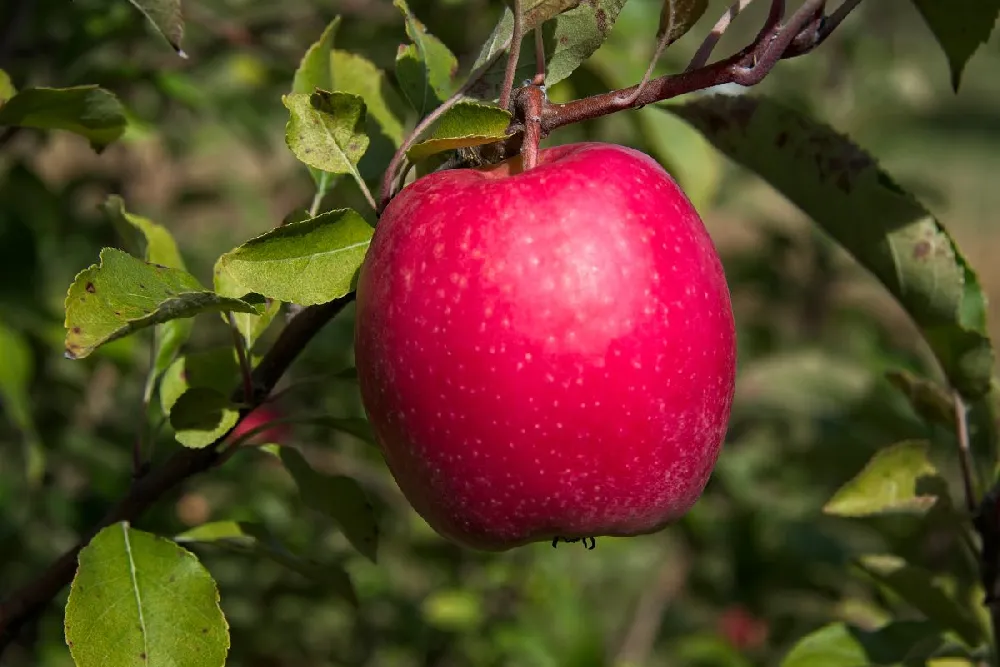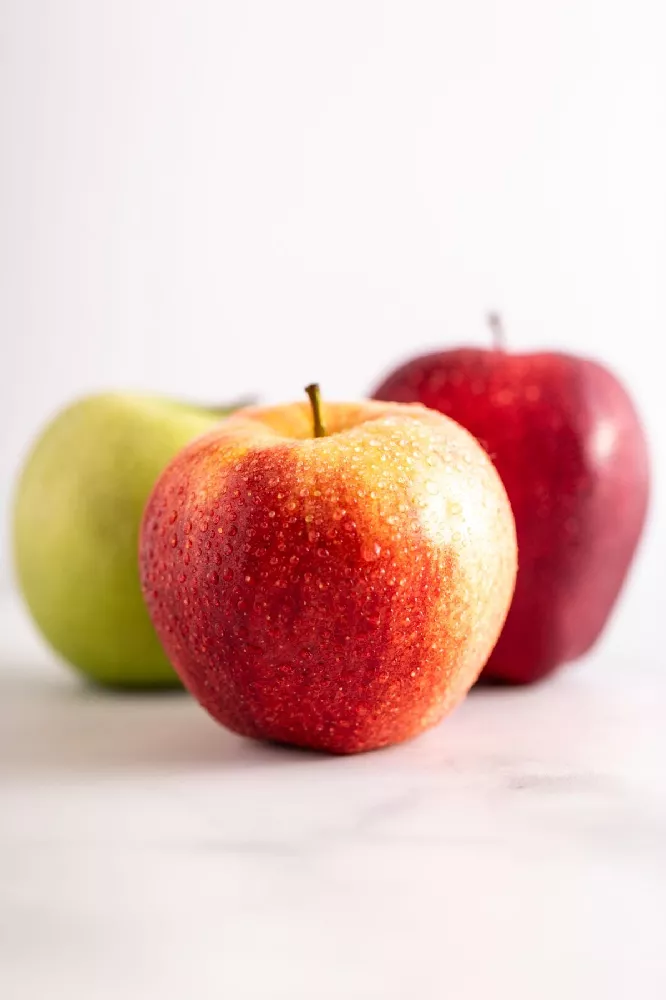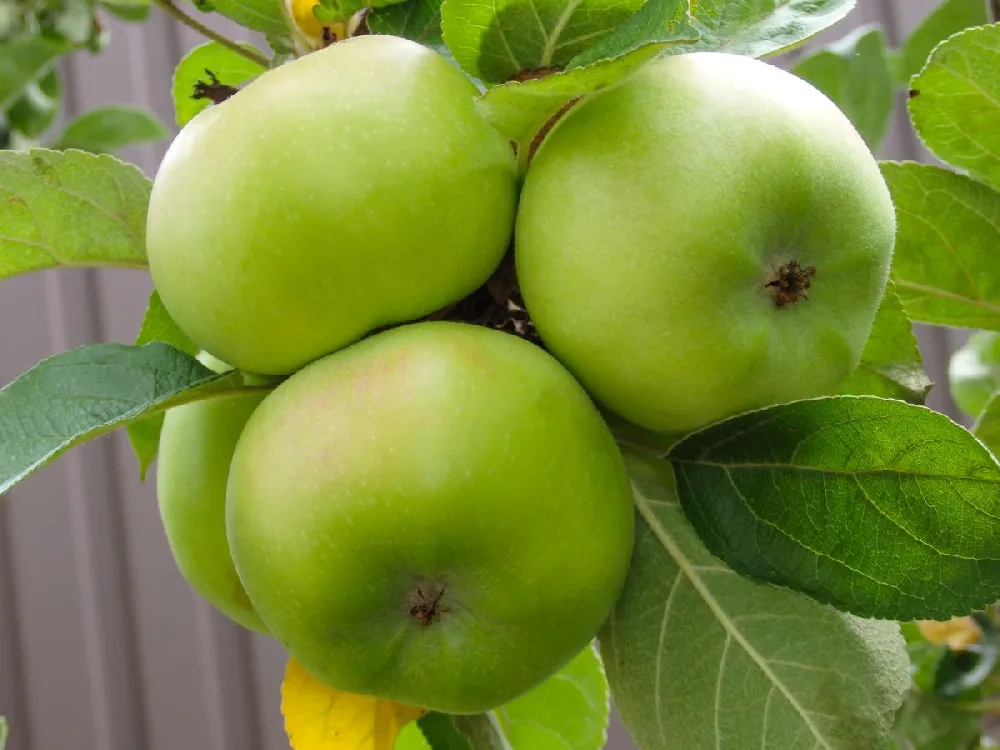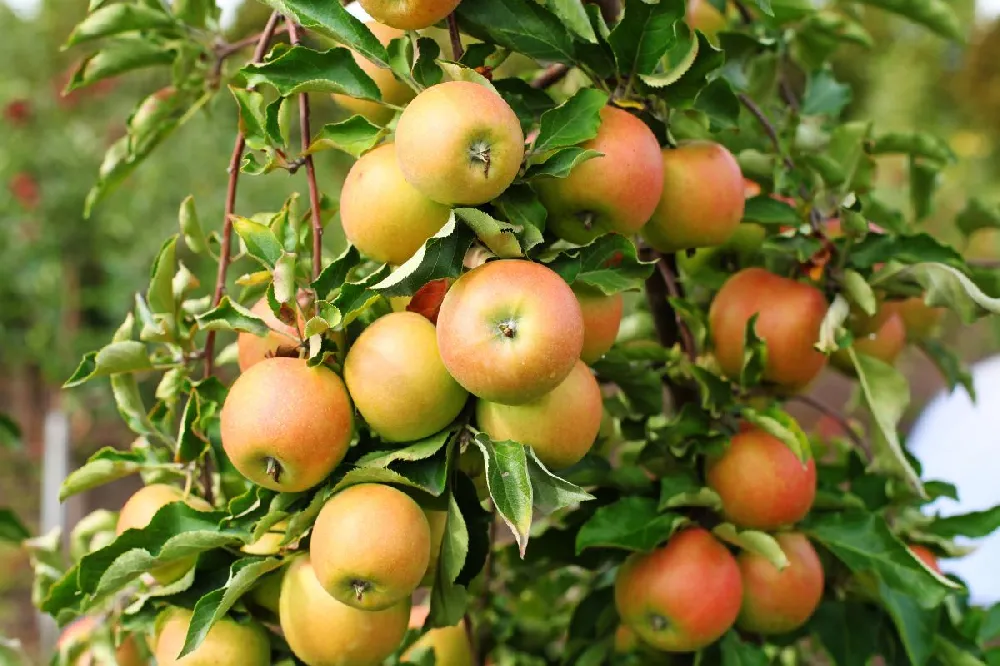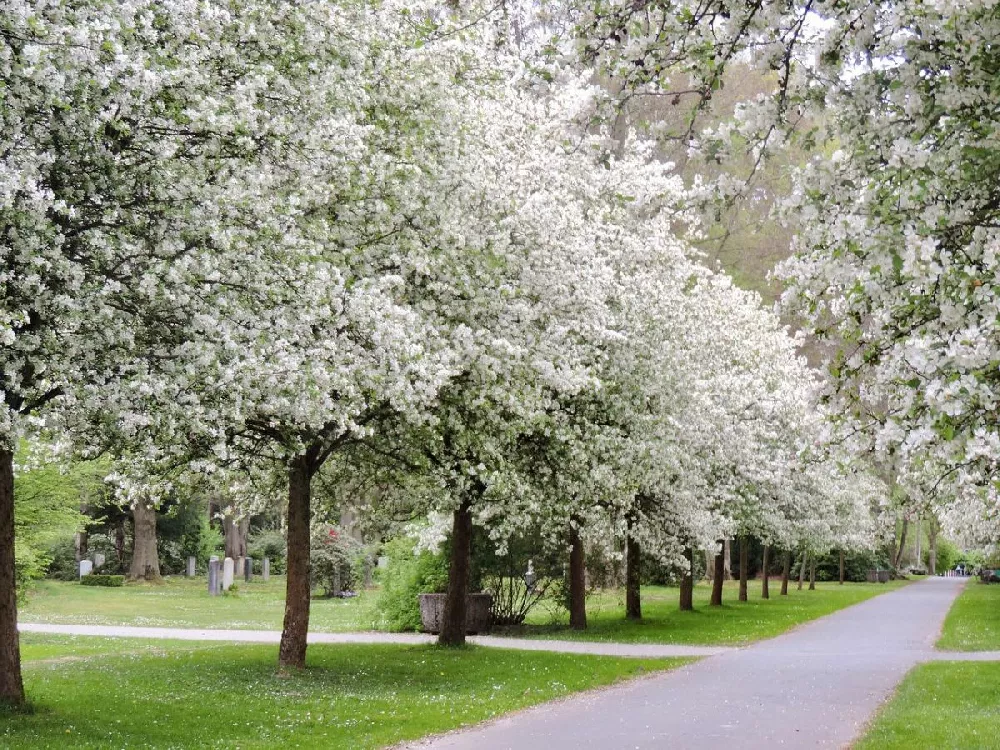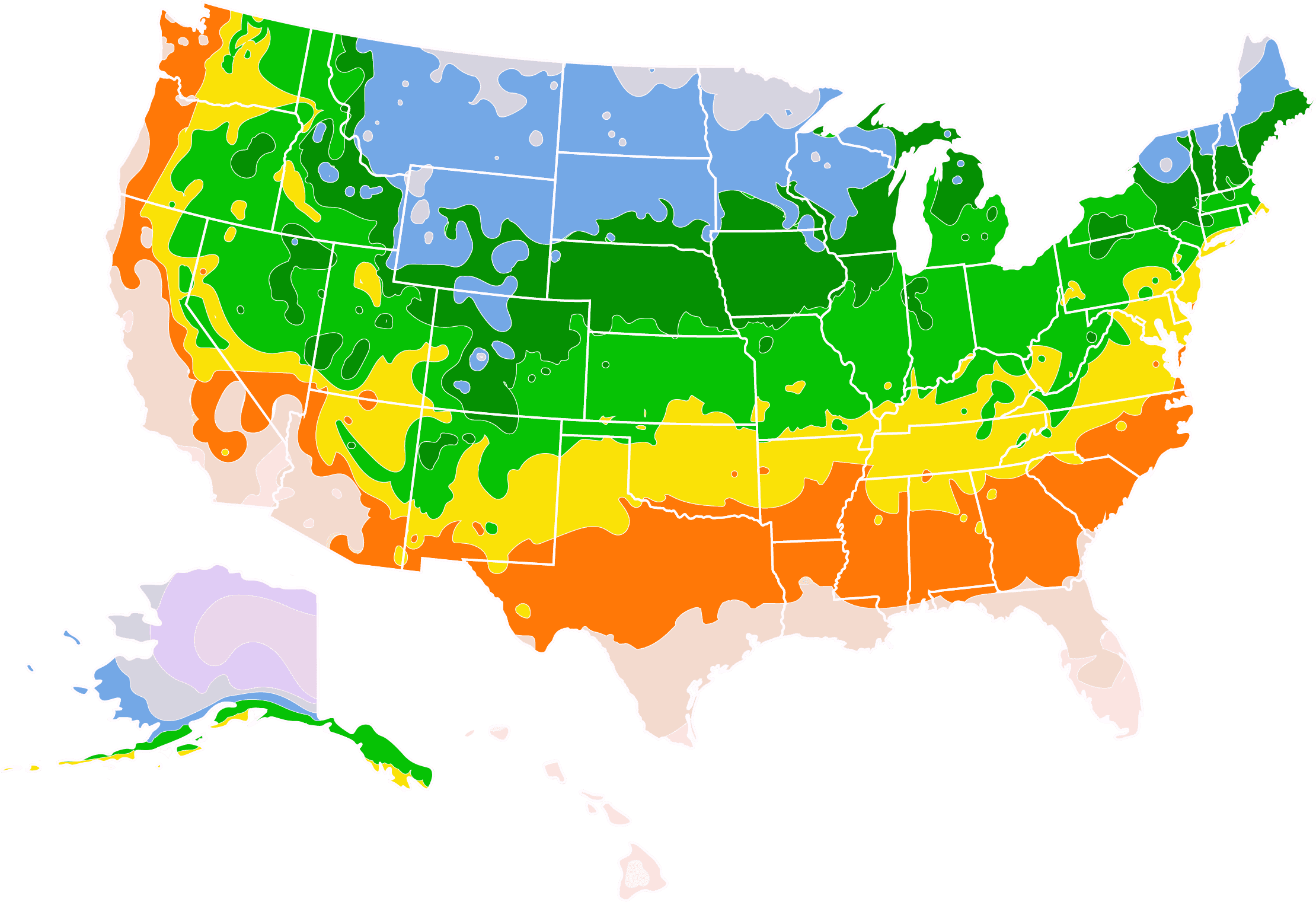- Home >
- Flowers >
- Trees and Plants with White Flowers >
- Lollipop® Crabapple Tree
Lollipop® Crabapple Tree for Sale - Buying & Growing Guide
While some crabapples are large enough to shade your yard, others take a smaller form that allows them to fit in even the smallest garden beds. The Lollipop® crabapple tree, or Malus ‘Lolizam,’ belongs to that second group. This cultivar has a recognizable form that is just like a lollipop, as the common name implies. It also proves to be quite easy to care for, as it provides bright colors for your garden during all parts of the growing season.
- This tree has a unique form that resembles a lollipop.
- The Lollipop® crabapple tree's fruits are bright red and persist into winter.
- During fall, the foliage often turns yellow.
Enter your zip code to find nearby stores that may carry this plant.
Plant Care
Sunlight

The Lollipop® crabapple tree should grow in an area that receives at least 6 hours of direct light per day.
Watering
Water weekly during establishment. When mature, this plant may need water only during hot weather.
Fertilizing

The Lollipop® crabapple tree can go without fertilizer but will benefit from an annual feeding of nitrogen-rich fertilizer once per year.
Planting and Care
Planting instructions
Start the planting process for your Lollipop® crabapple tree by removing your plant from its container and roughing the outside of the root ball to loosen any tangled roots. Then, dig a hole that is as deep as the root ball is tall and at least twice as wide. Place the tree in the hole so that the trunk is vertical and backfill with a mixture of soil and organic material, such as compost. The area where you perform this planting should receive plenty of daily sunlight and have soils that are moist but well-draining.
Watering and nutrients
After planting a Lollipop® crabapple tree, you should water it about once per week during the first growing season. Once your plant is established, you can reduce your watering schedule. Often, a mature Lollipop® crabapple tree will only need water during the hottest parts of summer. Otherwise, this plant typically survives on rainfall alone. While your Lollipop® crabapple tree can survive just fine without fertilizer, it can help to apply a nitrogen-rich fertilizer once per year in early spring.
Pollination
When the Lollipop® crabapple tree blooms in spring, it will attract many pollinators, including honeybees and other insects. These insects will enjoy the nectar that the flowers provide and will move pollen from one flower to another, which facilitates pollination. Since the Lollipop® crabapple tree is a self-fertile tree, you only need one if you wish to produce fruits. While few people are interested in eating the fruits of a Lollipop® crabapple tree, many people enjoy the sight of these bright red crabapples as they hang from the tree late in the season.
Pruning
One major convenience of the Lollipop® crabapple tree is that this cultivar will develop a regular lollipop shape without the need for excessive pruning. During the spring months, it can be beneficial to perform some light pruning with the goal of removing any dead or damaged limbs while also making slight corrections to this plant’s general shape. However, even if you neglect to prune it entirely, this tree should remain healthy and look attractive all on its own.
Pests, diseases and animals
As is the case for many crabapple varieties, the Lollipop® crabapple tree can fall victim to both pest infestations and diseases. Regarding disease, some of the most common infections include apple scab, leaf spots and cedar apple rust. However, the last of those diseases is avoidable if you don’t plant this tree near a cedar plant. Infestations can also be a problem for the Lollipop® crabapple tree at times. The most common pests that will afflict this tree are Japanese beetles, scale insects and aphids.
Harvesting
Fruit harvest is not a common goal when growing a Lollipop® crabapple tree, but it is an option. Each year, upon successful pollination, your Lollipop® crabapple tree will produce a set of bright red crabapples that mature in fall and persist into winter. In their raw form, the crabapples can be a bit too tart. However, they can be more enjoyable if you incorporate them into jams. Harvesting these crabapples is as easy as removing them by hand from the branches.
Achieving maximum results
Along with attracting insect pollinators, the Lollipop® crabapple tree will also attract larger forms of wildlife, including birds, which often feed on the red crabapples this plant produces. As such, anyone interested in harvesting those fruits will need to do so before the birds have a chance. Also, the Lollipop® crabapple tree often proves to be resistant to deer browsing, which makes it an excellent plant for those who have struggled to keep deer out of their gardens.
FAQs
How large does the Lollipop® crabapple tree grow?
One of the top reasons that gardeners choose to plant the Lollipop® crabapple tree is that this cultivar is on the smaller side. At most, the Lollipop® crabapple tree will achieve a height of about 8 feet tall and a spread that reaches a similar dimension. This size amounts to a small tree with a single trunk that supports a canopy that is somewhat symmetrical and naturally round.
How do you know if a Lollipop® crabapple tree needs fertilizer?
Generally, the Lollipop® crabapple tree will perform just fine without the need for regular fertilization. However, there are a few signs that you should watch out for, which indicate that this plant needs feeding. If you notice that the leaves of this plant are less numerous than in previous seasons or that they have a paler color than usual, that is a good sign that your plant would enjoy some nitrogen-rich fertilizer.
Is Lollipop® Crabapple Tree a messy plant?
The Lollipop® crabapple tree can be somewhat messy compared to other ornamental plants in your garden. The main issue with this tree is the fruit it produces. While the fruit is quite nice to look at, it can cause a mess when it falls to the ground. Specifically, crabapples can stain paving areas if given a chance. As such, you should be prepared to clean up after your Lollipop® crabapple tree if you choose to plant one.
Compare Similar Products
You can't add more Product Name - Product size to the cart.
OK